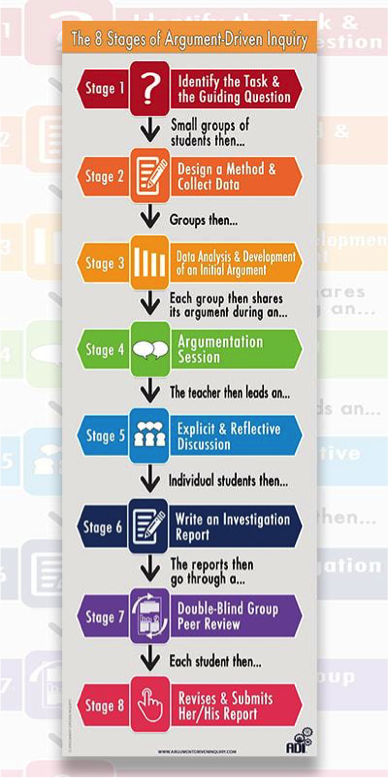In Middle School science, we’re implementing a new approach to some of the laboratory work this year. Argument-Driven Inquiry (ADI) is based on research that suggest students understand and retain scientific information better if they develop argumentative skills as they learn core ideas.
In the past, most labs provided students with a prescribed set of procedures, which limits the student input on data collection. The ADI model instead presents a phenomena to investigate, and a guiding question for the students to answer. From there, the students are given creative license to design their own experiment to answer that question.
Our first foray into ADI this year tackled how thermal energy changes matter at the molecular level during a phase change—in this case, vaporization.
Students first learned through background readings and teacher instruction about inter- and intra-molecular forces, temperature, and kinetic energy. From there, they wrote a proposal of the lab they wished to perform based on a set material list. Each team met with their teacher who guided them through a revision process before their proposal was accepted. This was a valuable opportunity to work with individual teams and really pushed students to think about the intricacies of experimental design.
For this experiment, students assigned their own variables. Some chose different amounts of water to heat to boiling, while others heated samples of water with different starting temperatures. Many recognized the importance of repeating their tests to better understand the notion that heat causes matter to spread out. Once students collected their data, they observed that the time it took water to reach a phase change varied, but the temperature at which water boils remained the same despite the variables they tested.
Each team answered the guiding question of the lab and developed an initial argument based on the data they collected. Students then participated in an initial argumentation session where one team member stayed at their lab station to defend their procedure and “claim,” while the other team member spoke with their classmates, asked them questions, and specifically looked for mistakes in their methodologies or claims. This was a fascinating process to observe as students were active and engaged in defending their thesis, while civilly finding the holes in a student’s argument. The teachers did ask a few questions, but were otherwise removed from this process which promoted student oral argumentation.
Students revised their arguments through explicit reflection on their procedure, the data they collected, and the argumentation session with their peers, and channeled it into a lab report. ADI lab reports are written to be persuasive while still using the data as evidence to support their claims.
The rough draft of the report went through a double-blind peer review session, which allowed students to give constructive feedback on the claim, procedure, and analysis. The peer review session also allowed students time to revise their work before turning it in.
As a result of using the ADI method, the lab reports were considerably more diverse than in previous years, due to the fact that students are writing from their own perspective of the lab work, rather than the prescribed checklist of procedure and analysis.
The ADI model is ultimately a variation of the scientific method, and while we continue to tweak each step as we learn the process, we are encouraged by the creativity and variation it has shown to develop in young scientists.


